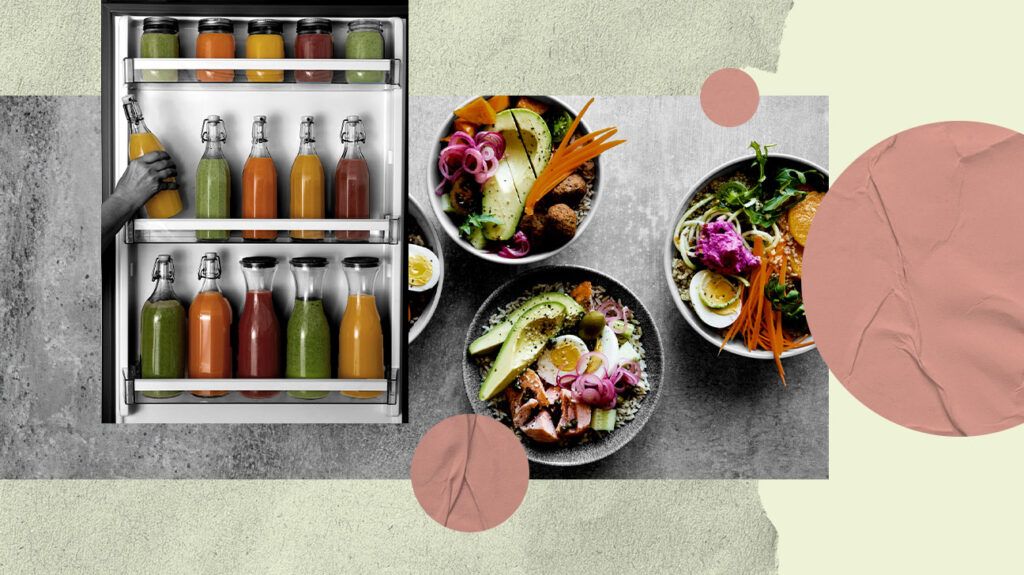Volume eating involves eating high volumes of low-energy-density foods, such as fruits and vegetables. This can help people feel satisfied and full while maintaining a low caloric intake.
Following the volume-eating approach involves eating more nutrient-rich, low calorie foods with high water content, such as fruits and vegetables. It typically means limiting or avoiding high calorie foods, such as nuts, seeds, and sweets.
This may contribute to weight loss by helping a person feel full while consuming fewer calories.
This article explains volume eating in more detail, including its benefits and disadvantages. It also discusses high, moderate, and low volume foods and how to try volume eating.

Volume eating is a dietary approach that limits the caloric intake rather than the volume of food a person eats. The method
People who follow a volume-eating diet typically eat larger portions of low calorie foods, limit their intake of medium-calorie foods, and strictly limit or avoid high calorie foods. This may help a person maintain a moderate weight or lose weight while eating enough to meet their nutritional requirements.
Volume eating has several potential health benefits.
Sustainability
People who follow diets that rely on eating small portions or avoiding food groups may experience increased cravings for high fat foods. A person may find it difficult to maintain diets that increase cravings and hunger, and feeling hungry can lead to overeating and weight gain.
Promotes a nutrient-rich diet
Volume eating
According to the
- supporting the immune system
- helping people live longer
- maintaining skin, eye, and teeth health
- lowering the risk of certain health conditions, such as type 2 diabetes, some cancers, and heart disease
- helping the digestive system function
- supporting bone and muscle health
Limits processed foods
Volume eating
These include:
- a
higher risk of heart disease - a
higher mortality rate - a
higher risk of certain cancers, including breast cancer
Weight loss
Research suggests that volume eating may help some people lose weight. A
The researchers associated the eating approach with greater motivation, satisfaction, and ease than a standard weight loss plan.
The main disadvantage of volume eating is its focus on calorie counting. Certain foods may be low in calories but highly processed and nutrient-poor. Other nutritious and beneficial foods containing healthy fats, such as nuts, are high in calories, so people following a volume eating approach may not include them in their diet.
It is not always sensible to categorize a type of food as healthy or unhealthy based on its calories.
Another disadvantage of restricting calories may be that the body lacks vital nutrients, which can lead to malnutrition and a weakened immune system.
Researchers have also found that calorie counting
Read about daily calorie requirements.
The following sections give examples of foods to include and avoid in the volume eating approach.
High volume foods
High volume foods are foods a person may eat freely at any time and in any quantity under a volume-eating diet. A person following a volume-eating diet should eat more of these types of foods than others to increase feelings of fullness. These foods have a very low calorie density.
Examples of high volume foods
- broth-based soups
- almost all types of fruits, including apples, citrus fruits, berries, bananas, and stone fruits
- nonstarchy vegetables, such as carrots, tomatoes, leafy greens, broccoli, and cauliflower
A person following a volume-eating diet should eat reasonable portions of foods with a slightly higher calorie density. These include:
- low fat dairy products
- whole grains
- legumes
- lean proteins
Moderate volume foods
Moderate-volume foods are foods a person should eat in moderation under a volume eating plan. A person should manage their portions of food
- high fat meats
- fat-free baked goods
- cheeses
- bread
- white rice
Low volume foods
A volume eating diet restricts low-volume foods and requires a person to manage their portions of the following foods carefully:
- candy
- nuts
- fried foods
- cookies
- highly processed foods
- cooking oil
- butter
The results of different diet plans and approaches can vary between individuals. A person can adapt a volume eating diet to their preferences and needs.
A person can incorporate volume eating into their diet by ensuring meals and snacks consist mainly of high-volume foods. Eating high volume foods at the start of a meal
An example of a day of volume eating could include:
- Breakfast: Cup of fat-free yogurt with fruit
- Snack: Any volume of chopped vegetables, such as carrot and cucumber slices
- Lunch: Large salad with grilled chicken breasts and light dressing
- Snack: Fruit salad
- Dinner: Lean ground beef lettuce cups with vegetables
Volume eating involves eating a high volume of low calorie, nutrient-dense foods. Eating this way may help people increase feelings of fullness while reducing their caloric intake. This could help with weight loss or maintaining a moderate weight.
However, volume eating restricts certain healthy foods, such as nuts and oils that contain healthy fats. The approach also relies on counting calories, which can inaccurately represent how nutritious a food is and may have links to eating disorders. This may make volume eating unsuitable for some people.
A registered dietitian can help create an eating plan suitable for a person’s needs.
